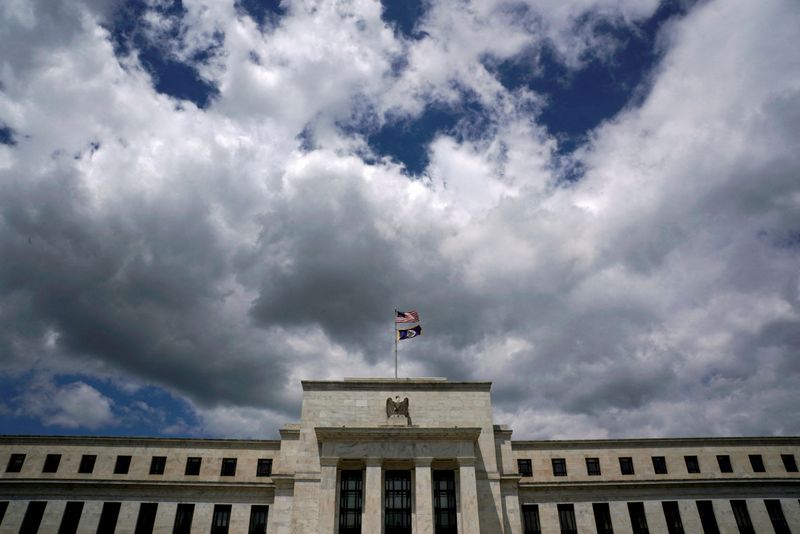(Reuters) – Another barometer of Federal Reserve hawkishness is making a bigger appearance on investors’ dashboards: quantitative tightening.
Minutes from the Fed’s December meeting released on Wednesday showed that officials had discussed shrinking the U.S. central bank’s overall asset holdings as well as raising interest rates sooner than expected to fight inflation, with “many” judging the appropriate pace of the Fed’s balance sheet reduction would be faster this time.
Investors said the hawkish signal bolsters the case for those who believe the central bank will need to act more decisively in order to contain inflation, and could fuel further bets on higher yields while continuing to shake up the growth and technology shares that powered last year’s dynamic stock rally.
“There’s a real risk that the Fed is being too aggressive here,” said Scott Kimball, co-head of U.S. fixed income at BMO Global Asset Management, who reduced his positions in high yield corporate bonds and private debt late last year, believing they will underperform as rates rise.
“If the Fed is reducing its presence in the market at the same time that its policies could choke off growth, that’s a pretty big walloping,” he said.
Stocks extended declines after the release of the minutes on Wednesday, led by a selloff in technology and growth shares. Bond yields, which move inversely to prices, rose, with the benchmark U.S. 10-year yield rising to its strongest level since April 2021.
Higher yields tend to weigh on some stocks, particularly growth names, because they threaten to erode the value of future earnings.
The Fed kicked off the taper of its $120 billion per month purchase of government bonds in November. A month later, it said it would aim to wrap up the taper by March rather than its mid-year target, and its “dot plot” showed a more aggressive path for rate increases than investors were expecting. That led some to wonder whether the central bank might start contemplating outright balance-sheet reductions as another tool to combat surging inflation.
Fed Chair Jerome Powell said after the December meeting that while policymakers hadn’t decided when balance sheet run-off would start, “those are exactly the decisions we will be turning to in coming meetings.”
Some analysts had anticipated the move. Analysts at TD said in a research note that they are short 10-year real rates as the market begins to price in balance sheet runoff, saying the current rate of nearly -1% was inconsistent with higher Fed rates and a shrinking balance sheet.
Ten-year real yields, Treasury yields that adjust for expected inflation, jumped to -0.8% on Wednesday.
The U.S. yield curve, meanwhile, flattened following the Fed minutes, after steepening the last two session, indicating investors are bracing for rate hikes that push short-term rates higher.
However, analysts at Citi said the accelerated time-line of balance-sheet runoff could see curve-steepening over the medium-term “as the balance-sheet vs rate hike pace debate stirs.”
While the Fed held its balance sheet in a steady state for about three years after beginning its taper in 2014, soaring consumer prices now may mean that the Fed will need to be more aggressive in reducing its over-$8 trillion balance sheet this time around.
Futures on the federal funds rate on Wednesday afternoon, following the release of the Fed minutes, priced in a roughly 80% chance of a quarter-percentage-point rate increase by the Fed at its March policy meeting.
“The fact that the balance sheet was discussed, and in more detail than we thought, sets the market up for possibly four rate hikes this year, and perhaps starting as soon as March,” said Kim Rupert, managing director of global fixed income analysis at Action Economics. “They are very afraid of inflation getting out of hand.”
Jason Ware, partner and chief investment officer for Albion Financial Group, believes broader equity markets may still rise under a more hawkish Fed, but expects more volatility and a rotation into economically sensitive companies.
“There is going to be some changes under the surface of the indexes,” Ware said.
(Reporting by David Randall; Additional reporting by Karen Brettell and Megan Davies; Writing by Ira Iosebashvili; Editing by Megan Davies and Leslie Adler)























